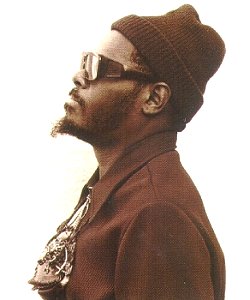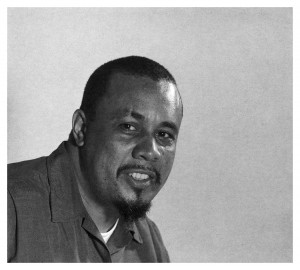I.
L’amour de l’art fait perdre l’amour vrai.
Or, the love of art makes one lose real love (attributed to Richepin).
As quoted by Vincent Van Gogh in one his heartbreaking letters to his brother and patron, Theo. (Incidentally, it is often stated that no one understood Vincent’s work while he lived. This is a fallacy, an unfortunate and possibly unforgivable oversight. The fact of the matter is that Theo advocated his brother’s art, but he was ill-suited to play the role of pied piper, since all the rats were already at the bottom of the sea).
It is simple, and possibly correct, to presume that Vincent was speaking of the sacrifices inherent in creation, the things one must willingly forsake in order to perfect their art. He identified with those words, and put his work before his life. His mind was his mistress, his canvas his castle, and his paintings the offspring he would never have. He was unlucky at love, and less lucky at life: doubly betrayed when his courtship went unrequited. But Van Gogh was not aware, when he quoted those words, what life had in store for him. Perhaps he was not talking about creating art, but the actual love of it, which is at once less and more perplexing.
Art and life are irreconcilable, if you are an artist. At least that’s how the story goes.
Vincent Van Gogh stood in a field and decided to take his life, even as the paint dried on his final attempt—the last in a lifelong endeavor—to transfer what he saw, in his mind and in the world around him. Van Gogh: he felt it, and he left it for us; on the canvas: the most indelible of his many self-portraits. It is not only in his face, but the dark rings, spiraling out behind him, an inverse halo. His madness, trapped inside him is trapped alongside him, for all time, on the canvas. Unable to endure it any longer, his despair overwhelmed his discipline, leaving him dead at 37. His last effort, now celebrated and studied like all the others he created, would propel no patrons and furnish no fortune, like all the others he created.
That these original prints fetch minor fortunes and are found reproduced in department stores is not the quicksilver quirk of fate, it is God laughing at us.
Or, in the absence of any God or divine, organizing force (an increasingly obvious and easy assumption), what then? It is us, the audience, laughing at ourselves.
And yet.
In his own words, from 1882: No result of my work could please me better than that ordinary working people would hang such prints in their room or workshop.
Does this not absolve, in the long view, the unfortunate, fleeting indignities the artist suffered while he walked, unnoticed amongst his indifferent brethren, the same ones who celebrate him now, who proudly and purposefully purchase his prints, the same one who writes these words?
His suicide: cowardice? Hardly. The world gave up on him long before he gave up on the world.
Is this what it comes down to, this one simple question:
Do you believe in God?
Ultimately that question, and the answer, is of little consequence. Much more important: does God believe in God? Does God believe in us?
II.
Heaven and Hell, if they exist at all, reside in the mind. And regardless of where you end up, that’s all you take with you.
You hear plenty about the suffering artist syndrome, the suicides, the drinking and the desolation, because these are the things that people who write about writers write about. Certainly, the artists themselves express this angst in their art, but you seldom see the solipsism on the screen or the stage or in the grooves of the vinyl. But then again, these artists don’t need anyone to celebrate their achievements, because the art they created does so with exceeding adequacy and eloquence.
For instance:
You don’t hear too much about a man like Rahsaan Roland Kirk, who was born blind and eventually taught himself to play three saxophones—simultaneously. At first, as is so often the case when folks are confronted by inexplicable genius, they simply refused to believe it. When he was no longer possible to ignore, he was acknowledged, begrudgingly, as a sort of circus act. Eventually, after the man and his music (a music that could—and often did—encompass the entire history of jazz in a single evening’s show) refused to go meekly into that alley called obscurity, he began to receive, almost two decades after he burst onto the scene, a smattering of the approbation his talent warranted. Then, as if to compensate for this overdue good fortune, Fate dropped the gloves, serving up a stroke that paralyzed the left side of his body. Rahsaan did not have time to question his particularly rough road; he was too busy figuring out a way to play the music he continued to hear. He made his last album, Boogie-Woogie String Along For Real, while confined to a wheelchair, and fortunately this document of courage and soul is still available for anyone interested in checking it out.
Kirk often talked about bright moments: moments where you feel deeply connected to the music, the message, and the soul of the messenger. To be sure, he made it rather easy: all one need do is listen with the heart as much as the ears and the music takes care of everything else—you’re just along for the ride.
And yet, you’re not. You really do go somewhere: begin here and end up there: when you listen to Rahsaan Roland Kirk, the experience is never static, you are always on your way someplace.
This is what jazz music, and Kirk’s music especially, signifies for me. As a dedicated non-musician, I use jazz as a viable source of empowerment; while it remains first and foremost a very real and easily identifiable source of extreme pleasure; it is also a vehicle, something used to get you somewhere else. A stimulus that demands a response, inexorably capable of conjuring up words and concepts (and constructions) such as spirit, soul, God, karma—things that are (rightfully) almost unbearably oblique, or pretentious, or all-too-easily invoked, usually as readymade escutcheons for folks who ardently need a way to articulate the feeling they either can’t quite explain or desperately wish to get in touch with. Because they heard about someone else who might have felt it. Or they heard a whisper on the wind, a rumor of some dude who was blind and could see everything, who left a legacy documenting some of what he said and thought and felt, left it right out in the open for anyone with the eyes to hear and the ears to see.
III.
Check it out: Most compact disc players have carousels that fit five discs. Five albums, five hours, more or less, of uninterrupted music. And for most people, this is more than adequate. However, on the off chance you want to listen to the work Charles Mingus committed to record in the single year of 1957, a five-disc changer would not be enough. Because, as people who follow jazz music might not even be aware, Mingus made six albums that year. Six exquisite albums. 1957: that’s a year to remember, to celebrate an achievement from one of our great American composers. This is almost my time, Mingus remarked in a prescient interview. Maybe this year. I know one thing: I’m not going to let anybody change me.
He then proceeded to make six remarkable albums, each strikingly different in terms of sound and conception. A miracle of modern music: East Coasting, The Clown, A Modern Symposium of Jazz and Poetry, Tijuana Moods, Mingus Three and Tonight at Noon.
Needless to say, these efforts went pretty well unnoticed. They certainly made Mingus neither famous nor rich. The tensions and stresses of harnessing the hush and thunder of his restless soul culminated in a brief confinement in Bellevue in early 1958. How about them apples? Mingus, indefatigable and defiant to the end, went on to make his mark on music—again and again—up to and after amyotrophic lateral sclerosis confined the colossus to a wheelchair, where he literally sang his songs, composing them with his mouth when he no longer could lift a pen.
To know this music is to know the pain and profundity of existence: the hardship of an African-American’s life during the tumultuous period that preceded the Civil Rights movement, when being black was an automatic obstacle. Couple that with being an artist (of any color)—another facilitator of alienation and loneliness—to being a black musician, particularly a black jazz musician, more particularly a black Bebop musician, most especially a willful, brilliant black Bebop musician who wrote, recorded and conceptualized his own music. The opposition and odds were almost insurmountable. Almost.
That these men were, in spite of the challenges and animosity that they ceaselessly encountered, and endured, nevertheless able to translate their glorious vision into the sweet, soulful music we have left to us for posterity is a testament to their spirit and dedication: their sense of single-minded purpose, which combines passion and pathos in a unique alchemy unlike anything else in American history. This is one of the great paradoxes of our last century—which is rife with irony and the squalid reality of our collective, consistent weakness and frail judgment—that the very individuals who were heroically creating an art form that we now claim as an American commodity (i.e., our own shared accomplishment) was performed (and forbidden from being performed) in clubs and towns where the artists were, at best, tolerated—more often, overlooked. To be sure, they were certainly not celebrated.
Even by jazz musician standards, Mingus paid substantial dues in his extended apprenticeship years, struggling to find a sympathetic label and always worried about money. Of course he also endured the non-musical outrages of the time, being an outspoken and exceptional black man in a country that considered him at best a second-rate citizen. Mingus bristled at the ignorance and intolerance that sometimes suffocated him, and his work can be viewed as an ongoing dialogue between himself and the world. All the passions that informed his underdog triumphs are inextricable from the music he made: as much as any other artist from the last century, his life was his music.
In the final analysis, all of Mingus’s music is a self-portrait of a man who helped define the direction of post-bop jazz, commenting on the country that created him. Charles Mingus was, above all things, a fighter. Since nothing came easily to him, his struggles—as a musician, as a man—acted as the kiln in which his character was forged. This is how Mingus, mercurial and larger than life, manages to encapsulate so many aspects of the American story: he battled to find his artistic voice, then he strived—often stymied by rejection or indifference—to have that voice heard. Eventually, inevitably, he managed to create material that was too brilliant to be ignored.
The light died on all of these men much sooner than they wanted or deserved, but through their art they managed to make themselves immortal.
* From a non-fiction work-in-progress entitled Please Talk About Me When I’m Gone.



